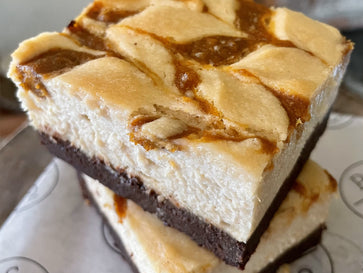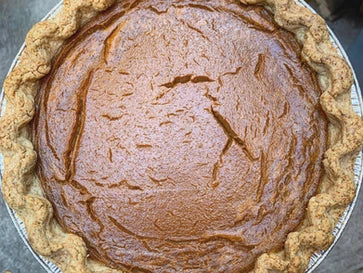It’s that time of year again where farmer’s markets and grocery stores are stocked with mounds of squash varieties in all shapes and sizes. Indigenous to the Americas, squashes are some of the oldest crops we know of dating as far back as 10,000 years. Containers found in Mayan ruins within Mexico held ancient pumpkin seeds proving these were part of the indigenous people’s diet. Seeds can actually be preserved as well. Back in 2008, archaeologists discovered seeds in a clay vessel on the Menominee Reservation near Green Bay, Wisconsin dating back over 800 years. These extinct seeds are from a variety of squash called Gete-okosomin. Students at Winnipeg’s Canadian Mennonite University were able to cultivate these seeds and harvest the ancient vegetables bringing life back to the squash.
Omega-3s
Squashes carry a multitude of health benefits. An interesting perk about many squash varieties out there is that the flesh, seeds, and flowers or blossoms can all be eaten. Studies have illustrated that the fatty acids from squash seed oil and skin promote anti-inflammatory properties. These nutrients contain polyunsaturated omega-3 fatty acids which are essential in proper brain and nerve functioning. Omega-3s are known to assist in the prevention and treatments of certain neurological disorders, heart disease; and reduce arthritis, diabetes, and osteoporosis.

Antioxidants
Butternut squash studies have shown anti-inflammation, antibacterial, and anti-tumor benefits within the body. They are also chocked full of antioxidants. The seeds have been shown to have a higher antioxidant content than the flesh of the squash itself. Squash waste residues are an amazing source of protein and phenolic compounds (found in fresh plants and high in antioxidants). Phenolic plays a very important role in protection against oxidative stress and can be obtained and digested through diet. Studies have shown that increased oxidative damage is directly connected with age‐related degenerative diseases. Phenolic compounds may protect biomolecules from oxidative damage and therefore can show a reduced risk of cardiovascular and degenerative diseases.
Fiber
Squash has a high fiber content that plays a positive role in colorectal carcinogenesis. Pumpkins, acorn squash, butternut, and other winter squashes can contain up to 10 grams of fiber per serving. Prebiotic fiber within squashes supports the healthy bacteria within your gut which are necessary for probiotics to do their job. One of the most glossed over nutrients in standard American diets is fiber and the #1 place to find it is through whole foods such as fruit, vegetables, beans, seeds, and legumes. Western diets typically have a high content of fat, sugar, animal protein, and starch. In some developing nations in Africa such as Tanzania and Burkina Faso, diets are shown to have seven times the amount of fiber than Americans, through plants.
What Can I Do With This Squash?
I’d like to share one of my recipes for a nourishing, unprocessed, fiber-fueled fall dinner option.
Vegan - Gluten-Free - Oil-Free
Stuffed Honeynut Squash with a Cheesy Drizzle

2 honeynut squashes
4 cups cooked brown rice
3-4 cups chopped raw kale
1 onion, large, chopped
5-6 garlic cloves, sliced
1 can chickpeas, drained
1 T. curry powder
½ tsp. turmeric
½ tsp. chili powder
½ tsp. paprika
salt/pepper to taste
cilantro for garnish
1 cup vegetable broth
Cheese Sauce
2 honeynut squashes or 1 small butternut squash
1 cup raw cashews, soaked
4 T. nutritional yeast
juice of ½ lemon
½ tsp. salt
½ tsp. chili powder
1 tsp. garlic powder or 2-3 garlic cloves, minced
vegetable broth to blend
-
Pre-heat oven to 400°F. Soak your cashews in a bowl of water and set them aside. Slice all the squashes lengthwise and scoop out the seeds. You may discard or save them to roast them. Brush the inside of the squashes with vegetable broth (or extra virgin olive oil if not using the oil-free recipe) and sprinkle on paprika, freshly ground pepper, and salt. Place them cut side down on a baking sheet and roast for about 20 minutes. Check to see that you can easily poke a fork through the flesh of the squash and remove it from the oven when ready.
-
In a large skillet, sauté onions, garlic, and seasonings. Use some vegetable broth to sauté instead of an oil option. Add more when the pan starts to dry. Add in your rice, chickpeas, and chopped kale and toss. Set aside.
-
In a high-powered blender, preferably with a tamper, add the scooped insides of 2 of the honeynuts or the butternut squash along with the rest of the cheese sauce ingredients. Blend while adding a bit of broth as needed. Adjust taste with any more salt, garlic, chili powder, or nutritional yeast.
-
Plate your roasted squashes with a large scoop of the rice blend and drizzle the cheese sauce on top. Garnish with chopped cilantro. Enjoy!
(Apple Slaw recipe by: @twospoons.ca)
Where to find Squash at P.S. & Co.
-
Organic Pumpkin Cheesecake Brownies - these brownies are really something special. They have a layer of cheesecake and a layer of our classic black bean brownie with a swirl of pumpkin. We use Miyoko's cream cheese, coconut sweetened chocolate chips, pumpkin purée, sweet potato purée, black beans, and only 100% organic, gluten-free, and plant-based ingredients as always. Part of our Thanksgiving menu and well an in-shop seasonal option.

-
Organic Pumpkin Pie - a Thanksgiving and occasional in-shop treat! We use a trio of gluten-free flours, Miyoko’s coconut and cashew-based butter, flaxseed, sweet potato and pumpkin, and coconut milk. A classic dessert for this time of year without the guilt!
-
Organic Pumpkin Cake - a specialty item on our Custom Cake Menu. It has sweet potato cream, vanilla cream, and cinnamon cardamom buttercream.
-
Organic Seasonal Specialty Cakes and Cupcakes - keep your eye out for our daily selections via our online ordering platform, Toast, or in house!
https://www.loc.gov/everyday-mysteries/agriculture/item/how-did-squash-get-its-name/
https://www.ncbi.nlm.nih.gov/pmc/articles/PMC7382094/
https://news.artnet.com/art-world/extinct-squash-revived-370727




Leave a comment
This site is protected by hCaptcha and the hCaptcha Privacy Policy and Terms of Service apply.